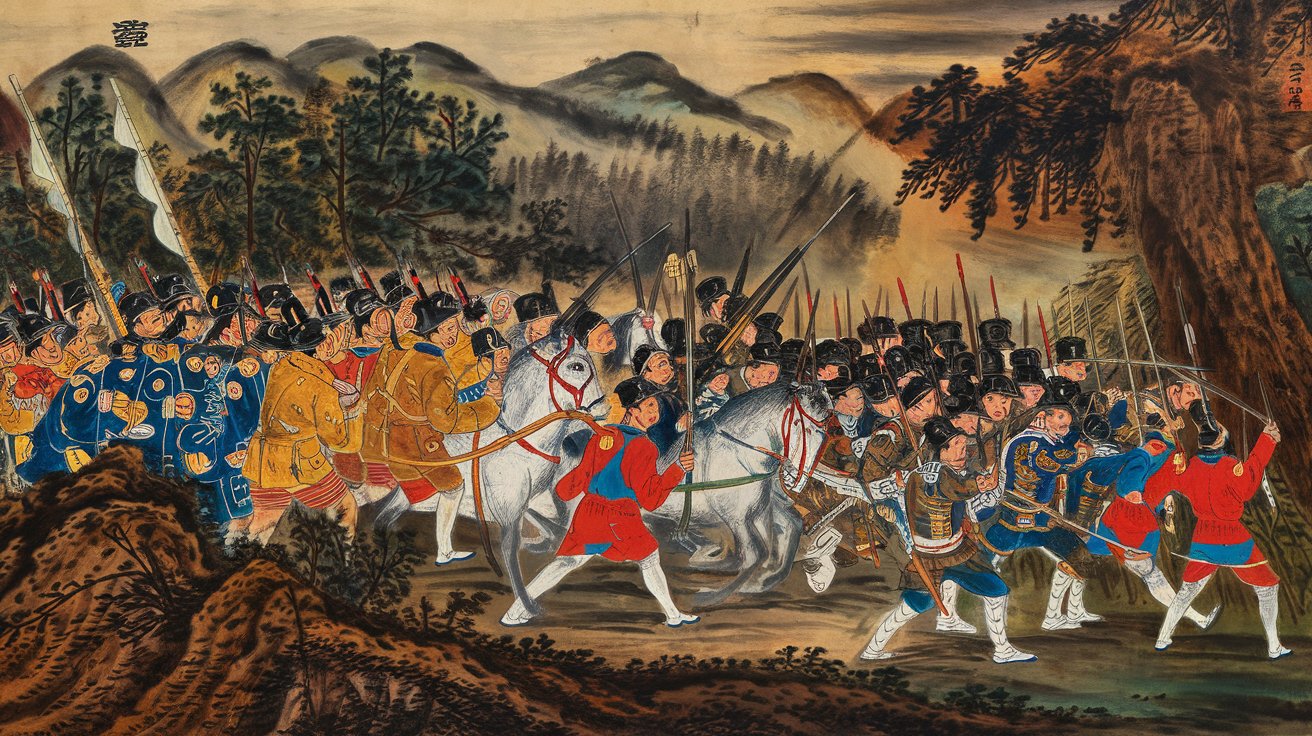
The Luchuan–Pingmian Campaigns were a series of military conflicts between the Ming Dynasty of China and the Shan state of Mong Mao, located in present-day Myanmar. These campaigns, spanning from 1436 to 1449, were driven by territorial disputes and the Ming Dynasty's desire to assert control over the region. The conflicts saw a mix of intense battles, strategic maneuvers, and diplomatic negotiations. Understanding these campaigns provides insight into the complexities of Ming military strategies, regional politics, and the cultural interactions between China and Southeast Asia. This blog post will delve into 25 intriguing facts about these historical campaigns, shedding light on their significance and lasting impact.
Key Takeaways:
- The Luchuan–Pingmian Campaigns were intense battles between China and Mong Mao in the 15th century, shaping the region's history and showcasing the challenges of warfare in rugged terrain.
- These campaigns led to the Ming Dynasty's control over the southwestern frontier, impacting trade routes and local economies while leaving a lasting cultural and historical legacy.
The Luchuan–Pingmian Campaigns: A Brief Overview
The Luchuan–Pingmian Campaigns were a series of military conflicts between the Ming Dynasty of China and the Shan state of Mong Mao. These campaigns took place in the 15th century and were pivotal in shaping the region's history.
The Origins of the Conflict
Understanding the roots of the Luchuan–Pingmian Campaigns helps grasp the broader historical context.
- The campaigns began due to territorial disputes between the Ming Dynasty and Mong Mao.
- Mong Mao, also known as Luchuan, was a powerful Shan state located in present-day Myanmar and Yunnan, China.
- The Ming Dynasty sought to expand its influence and control over the southwestern frontier.
- Mong Mao's leader, Si Renfa, resisted Ming authority, leading to a series of confrontations.
Key Figures in the Campaigns
Several notable individuals played crucial roles in the Luchuan–Pingmian Campaigns.
- Si Renfa was the leader of Mong Mao and the primary antagonist against the Ming forces.
- Ming Dynasty's Emperor Yingzong oversaw the campaigns during his reign.
- General Mu Sheng led the Ming military efforts against Mong Mao.
- Si Jifa, Si Renfa's son, continued the resistance after his father's death.
Major Battles and Events
The campaigns consisted of several significant battles and events that shaped their outcome.
- The first campaign began in 1436 and ended in 1449 with a temporary Ming victory.
- The second campaign started in 1441 and saw the Ming forces capturing Mong Mao's capital.
- In 1443, Si Renfa launched a counterattack, briefly regaining control of his territory.
- The final campaign in 1449 resulted in the decisive defeat of Mong Mao and the capture of Si Renfa.
The Role of Geography
Geography played a significant role in the strategies and outcomes of the campaigns.
- The rugged terrain of Yunnan and Myanmar made military operations challenging for both sides.
- Mong Mao's strategic location along trade routes added to its importance and the Ming's desire to control it.
- The dense forests and mountainous regions provided natural defenses for Mong Mao.
- The Ming forces had to navigate difficult terrain, which slowed their advances and complicated logistics.
The Impact on the Region
The Luchuan–Pingmian Campaigns had lasting effects on the region's political and social landscape.
- The campaigns solidified Ming control over the southwestern frontier, extending their influence.
- Mong Mao's defeat led to the decline of Shan states' power in the region.
- The campaigns disrupted local economies and trade routes, causing economic hardships.
- The Ming Dynasty established administrative structures to govern the newly acquired territories.
Cultural and Historical Significance
Beyond the immediate military outcomes, the campaigns left a cultural and historical legacy.
- The campaigns are documented in various Chinese historical texts, highlighting their importance.
- They influenced the Ming Dynasty's military strategies in subsequent conflicts.
- The campaigns are remembered in local folklore and traditions in Yunnan and Myanmar.
- Archaeological sites related to the campaigns provide valuable insights into the period's history.
- The Luchuan–Pingmian Campaigns exemplify the complexities of frontier politics and warfare in medieval Asia.
The Lasting Impact of the Luchuan–Pingmian Campaigns
The Luchuan–Pingmian Campaigns left a significant mark on history. These military actions, spanning from 1436 to 1449, reshaped the political landscape of Southeast Asia. The Ming Dynasty's efforts to subdue the Luchuan region showcased their military prowess and strategic planning. These campaigns also highlighted the importance of controlling trade routes and regional stability.
The conflicts influenced the cultural and economic exchanges between China and its neighbors. They also underscored the complexities of maintaining a vast empire with diverse ethnic groups and political entities. The campaigns' legacy continues to be a subject of study for historians and military strategists alike.
Understanding these campaigns provides valuable insights into the dynamics of power, diplomacy, and warfare in medieval Asia. The Luchuan–Pingmian Campaigns remain a testament to the enduring impact of historical events on shaping the world we live in today.
Frequently Asked Questions
Was this page helpful?
Our commitment to delivering trustworthy and engaging content is at the heart of what we do. Each fact on our site is contributed by real users like you, bringing a wealth of diverse insights and information. To ensure the highest standards of accuracy and reliability, our dedicated editors meticulously review each submission. This process guarantees that the facts we share are not only fascinating but also credible. Trust in our commitment to quality and authenticity as you explore and learn with us.
